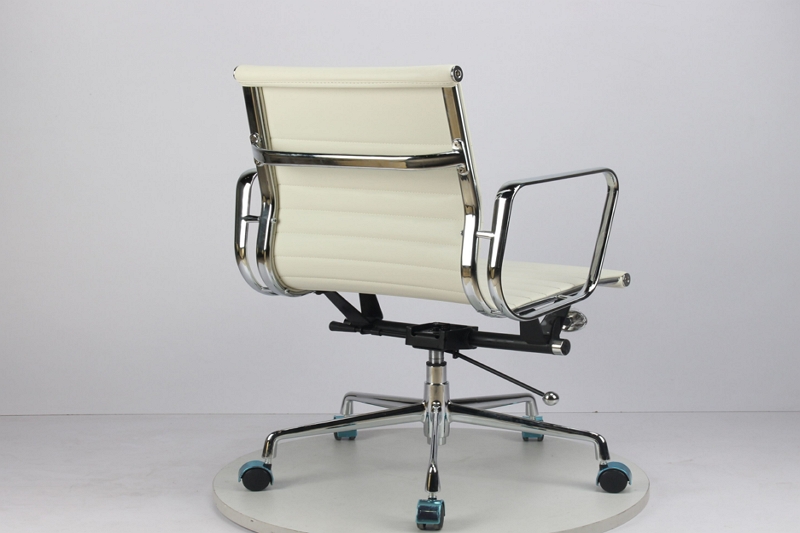If you’re reading this article, chances are that you have a hydraulic swivel chair with leaks. We know how frustrating it can be to see the fluid leaking from your chair and how difficult it is to find someone who can repair one. That’s why we’ve created this handy guide for how to fix hydraulic swivel chair! Read on as we show you how easy it is to do yourself!

Steps on Repairing a Hydraulic Swivel Chair
Step 1. The first step is to understand how your hydraulic swivel chair works. When you sit in the chair, it moves up and down as well as rotates around its central point – which we’ll refer to as ‘the fulcrum’.
Every time that the seat of the chair goes past the pivot point (such as when someone sits on it), the hydraulic fluid seeps out and lubricates everything. In order to fix your leak, you’ll need a small cup or container large enough to collect the leaking fluid without spilling over.
Step 2. Place this container under one of the legs on the chair – we recommend using an area that doesn’t move while someone is sitting in it so as not to spill any more fluids!
Step 3. Next, locate where there’s a visible hole in the bottom of your seat (this will be easy because liquid should be pouring out).
Mark how far up from this point that you can see gas escaping by marking with pencil how high up off of ground level it is. This distance corresponds to how much space needs to be filled with new oil for proper repair.
Step 4. Remove the leg with the large container underneath it and get a new can of hydraulic oil. The type you need is typically available at your local hardware store, in most cases either 15W or 20W.
Step 5. Pour as much fluid into the hole where gas was escaping until liquid consistently pours out from two holes – this means that too much has been poured in so pour some back out! Now how far up off of ground level do both leaks now show? This distance corresponds to how high above ground level your new oil needs to be placed for proper repair (we recommend placing close but not right on top).
Step 6. After pouring fresh hydraulic oil into the top of the chair, replace all four legs using screws and nuts . Tighten securely.
Important: it is crucial to replace both of the two screws that support each leg with new ones, as they can easily become stripped or broken during this process and lead to a chair becoming crooked on uneven ground!
Now put your hands in an “ok” sign together and push down firmly, then release quickly – how much oil do you hear pouring out? If you need more fluid (and not gas) coming out from the top of your hydraulic swivel chair, tighten one screw at a time until liquid begins pouring again without any interruption.
The goal is for continuous flowing once compression occurs; stop when there are no pauses even if required tightening means excess pressure washers must be used. Repeat these steps for the other three screws on your hydraulic swivel chair.
How do you Adjust a Hydraulic Chair?
All hydraulic chair adjustment knobs are located on the base of your swivel chair. If you’re looking at it, these screws should be in a row from right to left and are usually green or yellow.
The top knob is how high your back can go up (don’t over tighten this); the second knob controls how far out your seat rocks; third adjusts how much fluid pressure makes contact with the footrest when sitting down (increase pressure for more leg room).
Now that you know how to adjust a hydraulic swivel chair, make sure not to forget how many adjustments tools come standard! They’ll help keep everything running smoothly without any hiccups along the way – don’t worry about getting them dirty, they can handle it!
Why Does my Hydraulic Chair Keep Going Down?
Hydraulic chair (hyd) swivels allow the seat and back to go up/down. The hydraulic fluid that operates these chairs is generated by a large-diameter cylinder filled with oil under pressure, which traverses an “open” area inside a smaller diameter tube as it moves up or down.
If the end of your hose becomes blocked for any reason – dirt in the lining, you dropped something on it – then less hyd will be able to flow out when you press those knobs.
Adjust how high your back can go using knob one, how far out your seat rocks using knob two; and how much pressure makes contact with footrests when sitting down via knob three until this starts working again!
The left knob controls how high you can raise the back of your chair – and how far out the seat rocks.
The right knob adjusts how much contact pressure is made with footrests when sitting down on a hydraulic swivel chair.
We recommend that you also use a good vacuum cleaner hose to remove any particles which may be blocking the pipes leading into or out from this cylinder, before replacing it in its housing.
